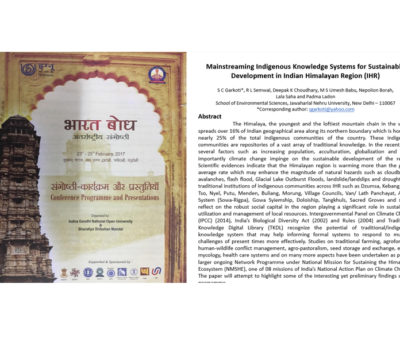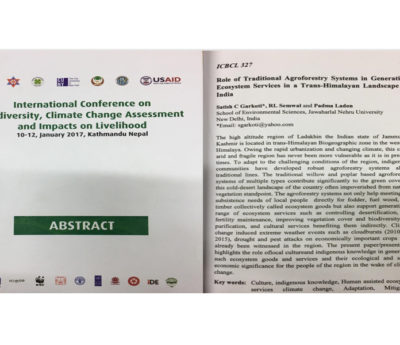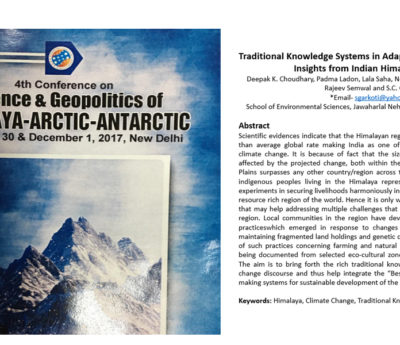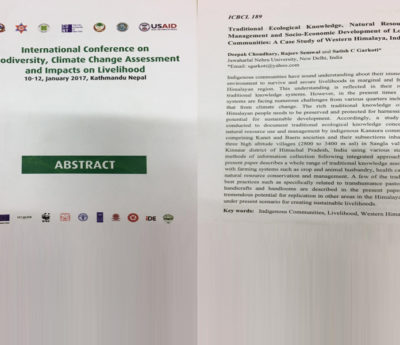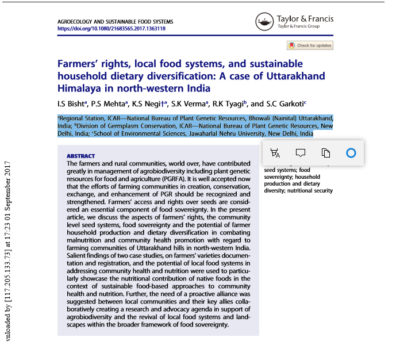Research Papers
Mainstreaming Indigenous Knowledge Systems for Sustainable Development in Indian Himalayan Region (IHR)
The Himalaya, the youngest and the loftiest mountain chain in the world, spreads over 16% of Indian geographical area along its northern boundary which is home to nearly 25% of the total indigenous communities of the country. These indigenous communities are repositories of a vast array of traditional knowledge. In the recent past, several factors such as increasing population, acculturation, globalization and more importantly climate change impinge on the sustainable development of the region.
International Conference on Biodiversity, Climate Change Assessment and Impacts on Livelihood
The High altitude region of Ladakhin the Indian state of Jammu & kashmir is located in trans-Himalayan Biogeographics zone in the western Himalaya. owing the rapid urbanization and changing climate, this cold, arid and fragie region has never been more vulnerable as it is in present times. To adapt to the challenging condition of the region, indigenous communities have developed robust agroforestry systems along traditional lies.
Traditional Knowledge Systems in Adaptation to Climate Change: Insights from Indian Himalayan Region
Scientific evidences indicate that the Himalayan region is warming at much higher rate than average global rate making India as one of the most vulnerable countries to climate change. It is because of fact that the size of humanity (about 600 million) affected by the projected change, both within the region and the adjacent Gangetic Plains surpasses any other country/region across the globe.
International Conference on Biodiversity, Climate Change Assessment and Impacts on Livelihood
Indigenous Communities have sound understanding about their immediate environment to survive and secure livelihoods in marginal and fragile Himalayan region. This understanding is reflected in their robust traditional knowledge Systems. However, in the present times these system are facing numerious challenges from various quarters including that from climate change.
A case of Uttarakhand Himalaya in north-western India
aRegional Station, ICAR—National Bureau of Plant Genetic Resources, Bhowali (Nainital) Uttarakhand, India; bDivision of Germplasm Conservation, ICAR—National Bureau of Plant Genetic Resources, New Delhi, India; cSchool of Environmental Sciences, Jawaharlal Nehru University, New Delhi, India


